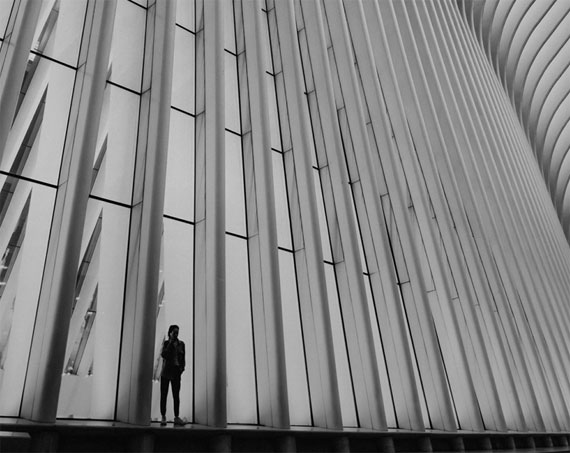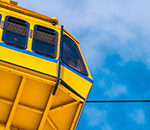The profound impact that a human presence can bring to architectural photography is often overlooked. By placing the emphasis on a solitary figure within a vast structure, photographers can breathe life into an otherwise static setting. Clifford Pickett, an established photographer from the Urban iPhone Photography Course, highlighted this unique concept in a recent video where he delved into the importance of integrating the human element, the advantages of backlighting, and the significance of the field of view in architectural photography:
A human figure within an architectural photograph offers an immediate sense of scale, making it easier for the viewers to comprehend the magnitude of the structure. As Clifford emphasized, it isn’t the detailed features of the person that matter – it’s their size and form. By introducing a human being into the frame, viewers gain an intuitive understanding of the size of the structure, which can be especially impactful in larger buildings.
The Magic of Backlighting
The role of backlighting in photography is critical, particularly when capturing the human form within architecture. Pickett demonstrated this concept while photographing The Oculus during the blue hour, the short period after sunset when the interior lights begin to illuminate the structure. He illustrated how using a silhouette – created by positioning the light source behind the subject – can produce a cleaner and more compelling image. The silhouette emphasizes the form and scale of the person, without the distractions of facial detail or clothing texture.
Considerations for Field of View
Adjusting the field of view in your lens is another important technique in architectural photography. By decreasing the field of view, less of the surroundings are captured, reducing the chances of unwanted figures entering the frame. Pickett demonstrated this principle by walking closer to his subject, thereby excluding more of the surrounding crowd. This adjustment allowed him to focus more intently on his chosen focal point: a single individual using their phone.
The Perfect Shot
In the final stages, Pickett highlights the need for patience when lining up the perfect shot. After framing his subject, he waited for the opportune moment when no other people were in the frame. He also positioned his camera to shoot upwards, placing his subject in the lower left corner of the image. This composition allowed him to emphasize the scale of The Oculus while retaining the human element that added life to the structure. The final image showcased the powerful dynamic between the lone figure and the expansive architecture, embodying the essence of his approach to architectural photography.
By incorporating the human element, skillfully utilizing backlighting, and manipulating the field of view, photographers can evoke a deeper understanding of the relationship between people and the architectural spaces they inhabit. The solitary figure within the grandeur of the structure evokes a sense of awe and fascination, reinforcing the potency of the human element in architectural photography.
Launch sale ending soon: The Urban iPhone Photography Course at 80% Off
Like This Article?
Don't Miss The Next One!
Join over 100,000 photographers of all experience levels who receive our free photography tips and articles to stay current:






Leave a Reply